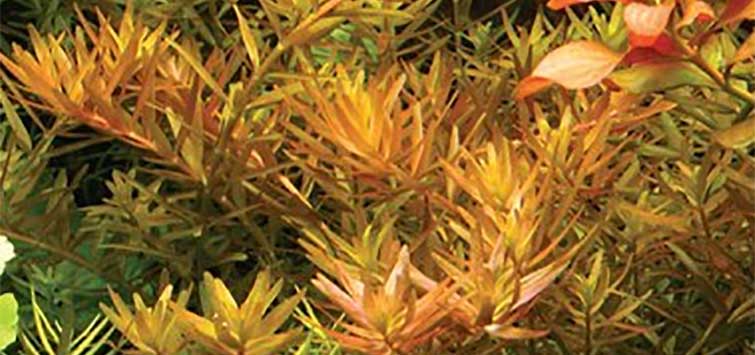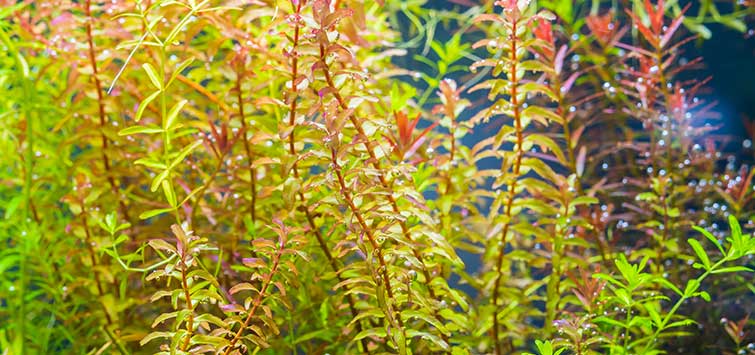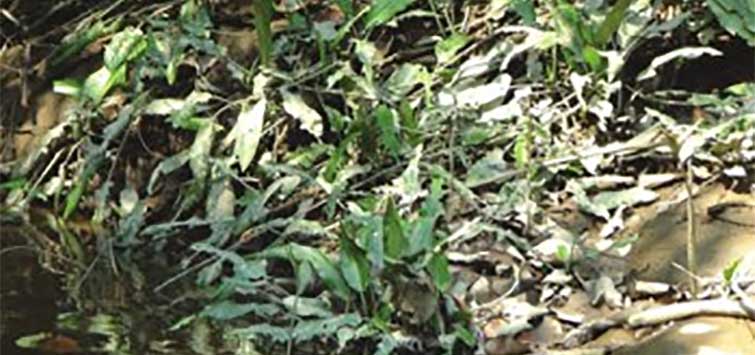Rotala rotundifolia
Author: Bryce Millar, MD
Common Names: Dwarf rotala
Division: Magnoliophyta
Class: Magnoliopsida
Order: Myrtales
Family: Lythraceae
Native Distribution: Indo-China, Vietnam, Burma (Myanmar)
Aquarium Placement: Background
Requirements: Prefers at least moderate light
Plant Description
Rotala rotundifolia is a classic aquarium plant and a staple of the hobby. It owes its popularity to its ease of cultivation and beautiful growth pattern. Most experienced aquatic gardeners have kept this plant at one time or another. The plant is readily available from Internet retailers and from fellow hobbyists.
In the wild, this species is often found in a semi-emersed state at the edges of rice paddies and in moist locations. The current distribution of this Rotala has expanded beyond its native range. While not listed as a noxious weed according to most state registries, it has become an invasive species in some states. As with any aquarium plant, there is always the potential for a careless aquarist to introduce a non-native species to the wild. Aquarists are reminded to follow all proper procedures regarding the disposal of the plant and aquarium water.
Aquascaping Uses
R. rotundifolia is a relatively undemanding aquarium plant and its growth can be rapid, especially under good lighting with CO2 supplementation. The species is a typical example of a rapidly growing stem plant and responds favorably to frequent and even heavy pruning. When allowed to grow to the surface, the plant will often turn back downward in a visually attractive cascade.
The physical form and coloration of this species is highly variable depending on its surroundings. Low or medium light will produce a somewhat lanky, yellow-green specimen. Under intense light with good micronutrient levels it will acquire a nice pink coloration. Maintaining nitrates below 5 ppm and phosphates above 1 ppm will further enhance this appearance. Both Dutch and Nature-style aquascapes often feature this versatile plant.
Propagation
This plant may be easily cultivated by taking cuttings from the upper portions of the stem structure. Stems placed in the substrate will quickly take root. After several cycles of trimming, a dense grouping will be produced. Eventually the lower portions will degrade, and uprooting and replanting the stem tops will restore the planting’s aesthetic appeal.
Notes: R. rotundifolia has also been known as Ammannia rotundifolia. This plant has frequently been confused with Rotala indica and is still commonly advertised as such by many retailers. Differences in the inflorescence provide the key to proper identification.




